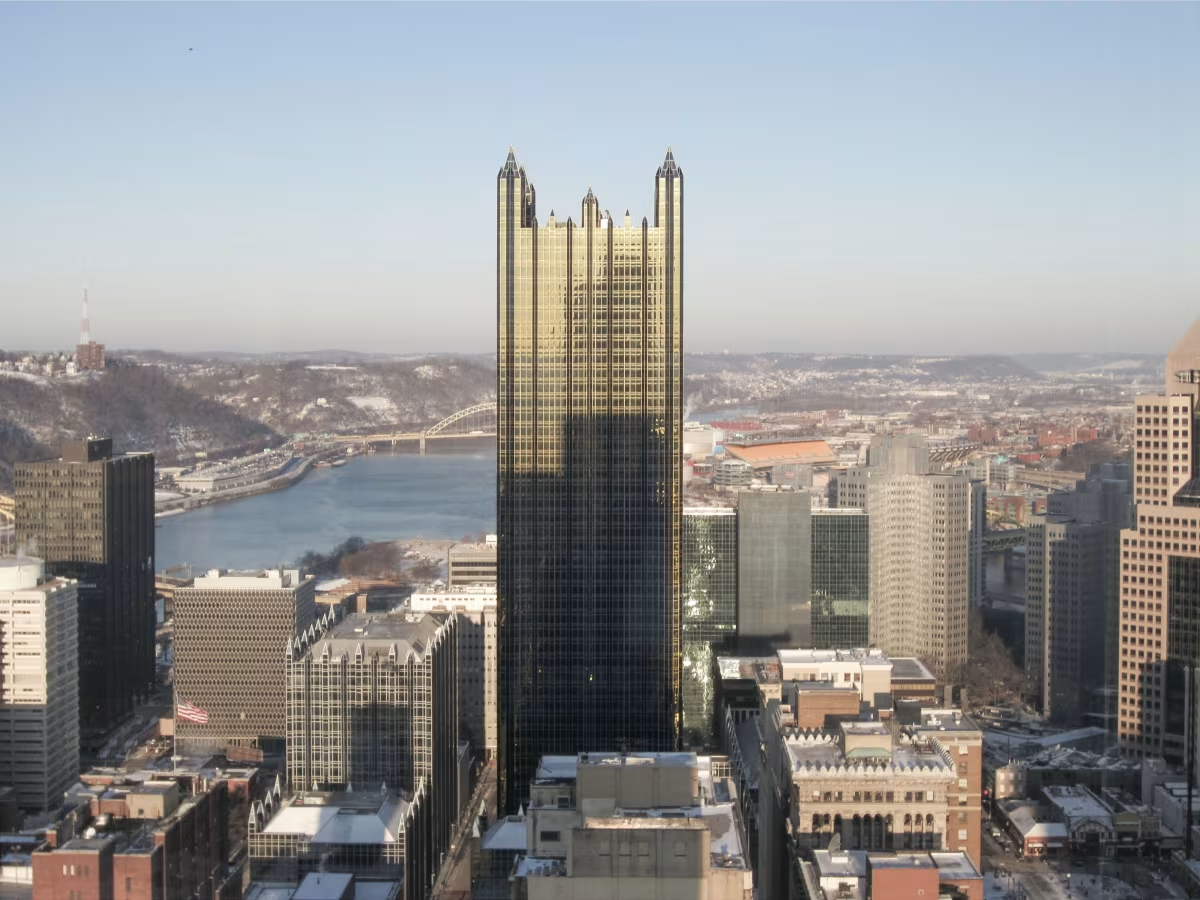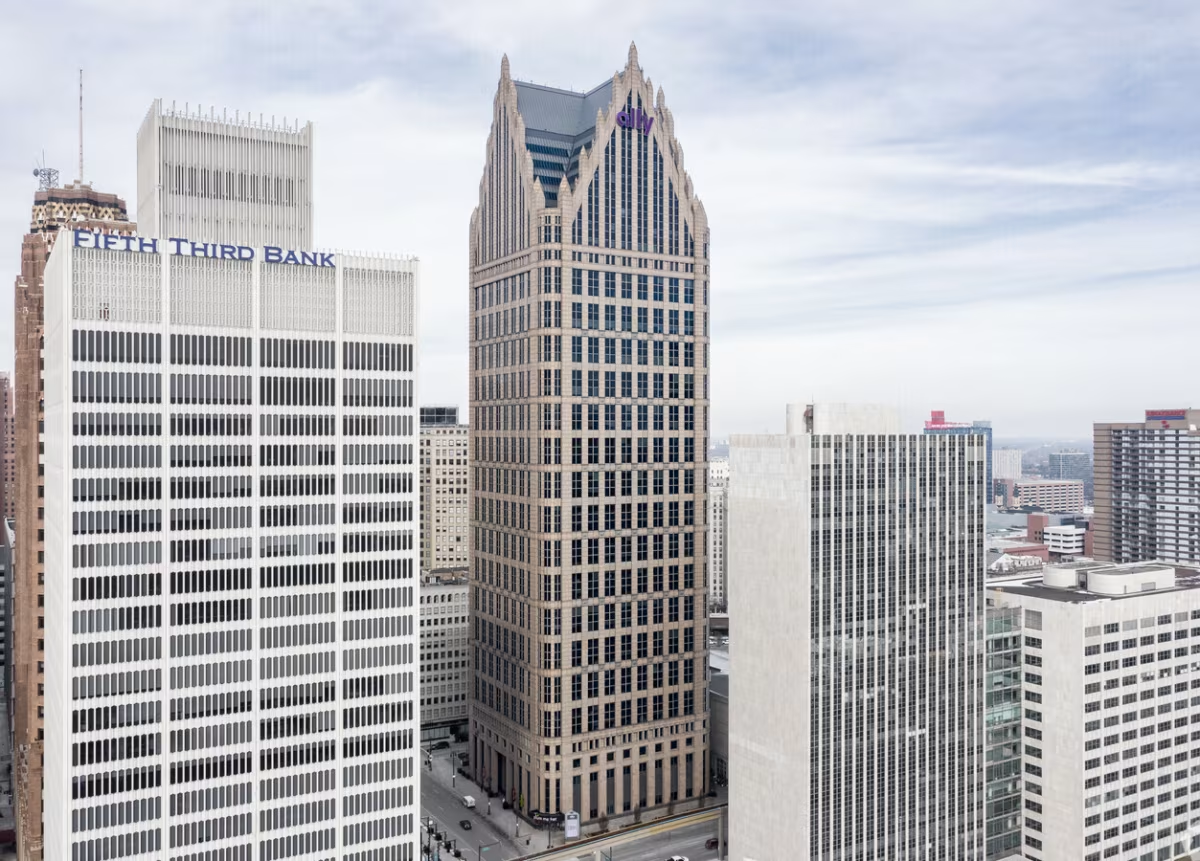One PPG Place vs Ally Detroit Center


Comparing the One PPG Place and the Ally Detroit Center is compelling because they were both designed by Johnson/Burgee Architects, yet they stand in different cities (Pittsburgh, PA and Detroit, MI), and were completed more than 9 years apart.
What this will allow us to see, is how the same firm's approach adapted to different places at roughly the same time (9 years isn't that much time when it comes to urban context and architecture).
Height & Size
These two towers present an interesting contrast in their proportions. The One PPG Place rises higher at 636ft (194m), while the Ally Detroit Center reaches 607ft (185m). However, the Ally Detroit Center accommodates more floors with 43 levels above ground, compared to 40 floors in the One PPG Place.
This suggests different approaches to interior space design. The One PPG Place has an average floor-to-floor height of approximately 4.9m, while the Ally Detroit Center has more compact floors averaging around 4.3m each. The taller building's more generous floor heights might indicate grander interior spaces, higher ceilings, or different programmatic requirements.
These different proportions likely reflect the specific needs each building was designed to serve, whether driven by zoning regulations, client requirements, or the intended use of the spaces within. The contrast shows how architects can achieve different spatial experiences even when working with similar overall building scales.
Architectural Style
Both the One PPG Place and the Ally Detroit Center were designed in line with the aesthetic conventions of the Postmodernism style.
The Ally Detroit Center was designed at a moment when the Postmodernism style was already in decline, making it more of a lingering expression of the movement. In contrast, the One PPG Place was built when the style still carried greater cultural weight.
Uses
Both the One PPG Place and the Ally Detroit Center are primarily commercial towers, serving similar roles in the urban fabric.
Both towers provide significant parking capacity, with One PPG Place offering 700 spaces and the Ally Detroit Center offering 2070.
Structure & Facade
Both the One PPG Place and the Ally Detroit Center rely on a Frame structural system.
A frame structure uses a grid of columns and beams to carry the building's loads. This frees the walls from structural duties, allowing for flexible floor plans and larger windows.
They also employ the same type of facade, a Curtain Wall facade.
A curtain wall is a non-load-bearing facade hung from the structural frame. It is anchored to floor slabs and transfers only its own weight and wind loads, allowing for sleek, glassy exteriors.
| One PPG Place | Ally Detroit Center | |
|---|---|---|
| Johnson/Burgee Architects | Architect | Johnson/Burgee Architects |
| 1981 | Construction Started | 1991 |
| 1984 | Year Completed | 1993 |
| Postmodernism | Architectural Style | Postmodernism |
| Commercial | Current Use | Commercial |
| 40 | Floors Above Ground | 43 |
| 166 | Last Floor Height | 176 |
| 194 m | Height (m) | 185 m |
| 194 | Tip Height | 189 |
| 21 | Number of Elevators | 22 |
| Frame | Structure Type | Frame |
| Steel | Vertical Structure Material | Steel |
| Reinforced Concrete | Horizontal Structure Material | Steel And Concrete |
| Glass, Aluminum | Main Facade Material | Granite, Glass |
| Mellon Stuart Construction And Blount Brothers Construction | Main Contractor | Walbridge Aldinger Company |
| PPG Industries | Developer | Hines Interests Limited Partnership |
| PA | State | MI |
| Pittsburgh | City | Detroit |
| 101 125 Third Avenue | Address | 500 Woodward Avenue |